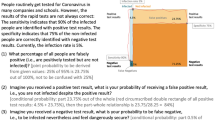Abstract
Integrating multiple perspectives when constructing an argumentation about a topic which has both arguments and counter-arguments is a very important 21st Century skill. In this study, we examined whether using tables for organizing information would be supportive of this argumentation process. Participants were 56 8th-grade students participating in a 5-day summer course. Pre- and post- assessments were administered at the beginning and end, and participants made oral presentations, which were video recorded for analysis. Participants were assigned to one of three conditions. In two of the conditions, participants were encouraged to use tables for organizing information and, in one of those conditions, participants were additionally provided exercises that required identification of problems in videos showing bad examples of argumentation. Results showed that participants encouraged to use tables spontaneously used more diagrams and constructed more argumentation in which multiple perspectives were integrated than others without such encouragement. Participants provided the exercise in problem identification also showed higher recognition of the value of using diagrams.
Access this chapter
Tax calculation will be finalised at checkout
Purchases are for personal use only
Similar content being viewed by others
References
Hilton, M.: Exploring the Intersection of Science Education and 21st Century Skills: A Workshop Summary. The National Academies Press, Washington, D.C. (2010)
An Action Canada Task Force Report: Future Tense: Adapting Canadian Education Systems for the 21st Century (2013)
Rychen, D.S., Salganik, L.H.: Key Competencies for a Successful Life and a Well-Functioning Society. Hogrefe & Huber, Göttingen (2003)
Taguma, M.: Redefining key competencies for the 21st century: new perspective for 2030 in OECD. Paper Presented in a Symposium “Constructing Educational Models for the 21st Century” at the University of Toyo, 5 December 2015. (in Japanese)
Perkins, D.N.: Postprimary education has little impact on informal reasoning. J. Educ. Psychol. 77, 562–571 (1985)
Wolfe, C.R.: Individual difference in the “myside bias” in reasoning and written argumentation. Written Commun. 29, 477–501 (2012)
Baron, J.: Myside bias in thinking about abortion. Think. Reason. 1, 221–235 (1995)
Nussbaum, E.M.: Using argumentation vee diagrams (AVDs) for promoting argument-counterargument integration in reflective writing. J. Educ. Psychol. 100, 549–565 (2008)
Nussbaum, E.M., Edwards, O.V.: Critical questions and argumentation stratagems: a framework for enhancing and analyzing students’ reasoning practices. J. Learn. Sci. 20, 443–488 (2011)
Toulmin, S.: The Uses of Argument. Cambridge University Press, New York (1958)
Nussbaum, E.M., Schraw, G.: Promoting argument-counterargument integration in students’ writing. J. Exp. Psychol. 76, 59–92 (2007)
Walton, D., Reed, C., Macagno, F.: Argumentation Schemes. Cambridge, New York (2008)
Uesaka, Y., Manalo, E.: How communicative learning situations influence students’ use of diagrams: focusing on spontaneous diagram construction and protocols during explanation. In: Dwyer, T., Purchase, H., Delaney, A. (eds.) Diagrams 2014. LNCS, vol. 8578, pp. 93–107. Springer, Heidelberg (2014)
Uesaka, Y., Manalo, E., Ichikawa, S.: The effects of perception of efficacy and diagram construction skills on students’ spontaneous use of diagrams when solving math word problems. In: Goel, A.K., Jamnik, M., Narayanan, N. (eds.) Diagrams 2010. LNCS, vol. 6170, pp. 197–211. Springer, Heidelberg (2010)
Ichikawa, S.: Manabu Iyoku to Sukiru wo Sodateru [Promoting Students’ Motivation and Learning Skills] Shougakukan, Tokyo (2004)
Uesaka, Y., Manalo, E., Ichikawa, S.: What kinds of perceptions and daily learning behaviors promote students’ use of diagrams in mathematics problem solving. Learn. Instr. 17, 322–335 (2007)
Acknowledgments
This work was supported by JSPS KAKENHI Grant Numbers 15H01976 and 15K13126. The authors would like to thank Emmanuel Manalo of Kyoto University for supporting and advancing this research and paper.
Author information
Authors and Affiliations
Corresponding author
Editor information
Editors and Affiliations
Rights and permissions
Copyright information
© 2016 Springer International Publishing Switzerland
About this paper
Cite this paper
Uesaka, Y., Igarashi, M., Suetsugu, R. (2016). Promoting Multi-perspective Integration as a 21st Century Skill: The Effects of Instructional Methods Encouraging Students’ Spontaneous Use of Tables for Organizing Information. In: Jamnik, M., Uesaka, Y., Elzer Schwartz, S. (eds) Diagrammatic Representation and Inference. Diagrams 2016. Lecture Notes in Computer Science(), vol 9781. Springer, Cham. https://doi.org/10.1007/978-3-319-42333-3_13
Download citation
DOI: https://doi.org/10.1007/978-3-319-42333-3_13
Published:
Publisher Name: Springer, Cham
Print ISBN: 978-3-319-42332-6
Online ISBN: 978-3-319-42333-3
eBook Packages: Computer ScienceComputer Science (R0)




